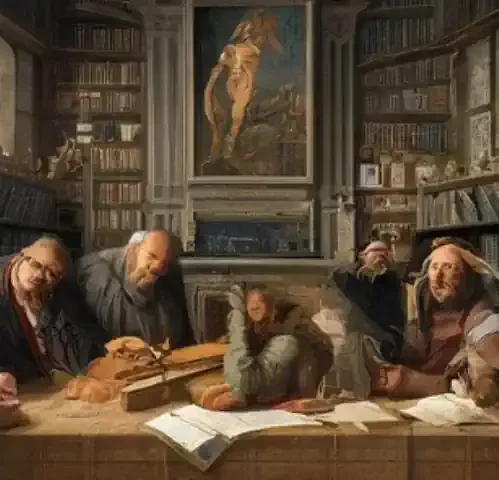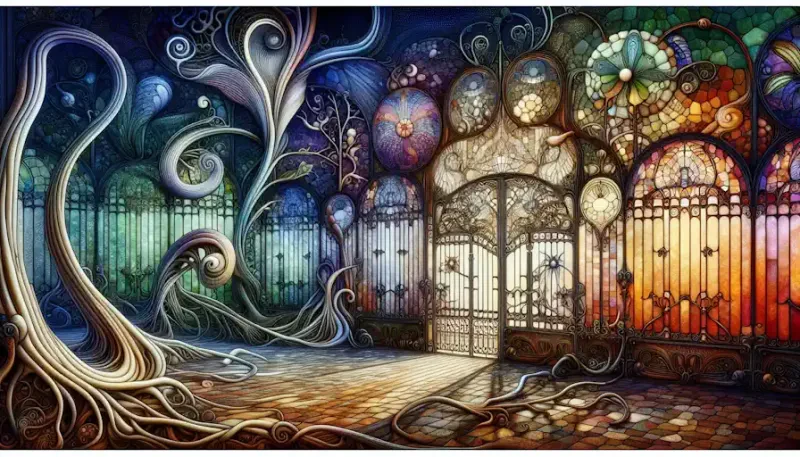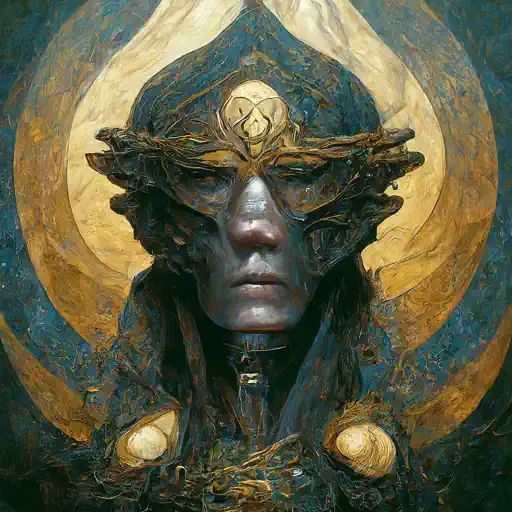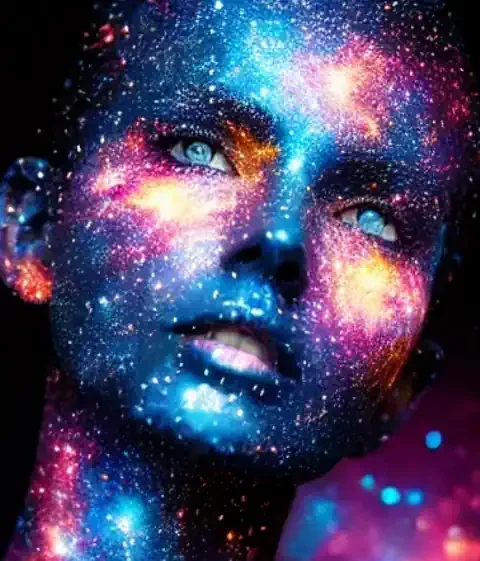Introduction
The Renaissance Era as a Pivotal Period in Art History
The Renaissance, which flourished from the 14th to the 17th century, marked a monumental shift in European civilization, characterized by a resurgence of intellectual curiosity, cultural rebirth, and artistic innovation. Emerging from the shadows of the Middle Ages, the Renaissance witnessed a profound transformation in various aspects of society, including art, literature, science, and philosophy. This period of rebirth, as its name suggests, represented a departure from the medieval mindset and ushered in a new era of humanism, individualism, and artistic expression.
Brief Overview of the Themes and Characteristics of Renaissance Art
The art of the Renaissance is renowned for its emphasis on realism, humanism, and technical mastery. Artists of this period sought to depict the world around them with unprecedented accuracy and detail, drawing inspiration from classical antiquity while also exploring new avenues of creativity. Renaissance art is characterized by its exploration of perspective, chiaroscuro (the use of light and shadow), and naturalistic representation of the human form. Themes such as religion, mythology, and the beauty of the natural world were commonly depicted in Renaissance artworks, reflecting the cultural and intellectual values of the time.
The Renaissance Era as a Pivotal Period in Art History
Social, Political, and Economic Factors Contributing to the Renaissance
The Renaissance emerged against a backdrop of significant social, political, and economic changes in Europe. The decline of feudalism and the rise of urban centers led to the growth of a prosperous merchant class, which in turn fostered a newfound appreciation for the arts. The patronage of wealthy merchants, aristocrats, and the church provided artists with the financial support and creative freedom to produce some of the most iconic works of the Renaissance.
Influence of the Italian City-States and Patronage on Artistic Development
The Italian city-states, such as Florence, Venice, and Rome, played a central role in the development of Renaissance art. These urban centers became vibrant hubs of artistic activity, attracting talented artists from across Europe and beyond. The competitive spirit among city-states fueled artistic innovation, leading to the emergence of distinct regional styles and techniques. Moreover, the patronage of influential individuals and institutions, including the powerful Medici family and the papacy, provided artists with the resources and opportunities to create enduring masterpieces.
In this section, we have explored the Renaissance era as a transformative period in art history, characterized by a rebirth of cultural and intellectual pursuits. We have examined the social, political, and economic factors that contributed to the flourishing of the Renaissance, as well as the pivotal role played by Italian city-states and artistic patronage in shaping the development of Renaissance art. In the subsequent sections, we will delve deeper into the themes, techniques, and masterpieces of Renaissance art, exploring their enduring allure and significance.
The Historical Context of the Renaissance
Social, Political, and Economic Factors Contributing to the Renaissance
The Renaissance emerged in the wake of the Middle Ages, a period marked by feudalism, religious orthodoxy, and cultural stagnation. As Europe gradually transitioned from the medieval to the modern world, several factors converged to fuel the cultural rebirth known as the Renaissance. The decline of feudalism and the rise of a merchant class brought about economic prosperity and social mobility, fostering an environment conducive to intellectual inquiry and artistic experimentation. Additionally, the aftermath of the Black Death and the Great Schism of the Catholic Church prompted profound social and religious upheaval, challenging traditional beliefs and paving the way for new modes of thought.
Influence of the Italian City-States and Patronage on Artistic Development
The Italian city-states, including Florence, Venice, and Rome, emerged as vibrant centers of commerce, culture, and artistic innovation during the Renaissance. The competitive spirit among these city-states fueled artistic rivalries and spurred artistic creativity, resulting in the flourishing of distinct regional styles and techniques. Moreover, the patronage of wealthy merchants, aristocrats, and the church provided artists with the financial support and creative freedom to produce some of the most iconic works of the Renaissance. Visionary patrons such as the powerful Medici family in Florence and the papacy in Rome played a pivotal role in shaping the artistic landscape of the Renaissance, commissioning artworks that celebrated their wealth, power, and cultural sophistication.
Renaissance Artistic Innovations
Departure from Medieval Artistic Conventions
The Renaissance witnessed a profound departure from the artistic norms of the Middle Ages. While medieval art often focused on spiritual symbolism and stylized forms, Renaissance artists sought to depict the world with greater realism and naturalism. This shift was motivated by a renewed interest in classical antiquity and a desire to emulate the artistic achievements of ancient Greece and Rome. Renaissance artists embraced techniques such as linear perspective, which allowed them to create the illusion of depth and space on a two-dimensional surface. They also experimented with chiaroscuro, using light and shadow to enhance the sense of volume and drama in their compositions.
Introduction of Perspective, Chiaroscuro, and Other Technical Advancements
One of the most significant technical innovations of the Renaissance was the introduction of linear perspective. Developed by artists such as Filippo Brunelleschi and Leon Battista Alberti, linear perspective revolutionized the representation of space in art, enabling artists to create more convincing and lifelike depictions of the world around them. In addition to perspective, Renaissance artists explored chiaroscuro, the careful manipulation of light and shadow to create depth, drama, and atmosphere in their works. These technical advancements, combined with advancements in anatomy, composition, and color theory, helped to define the aesthetic principles of Renaissance art and set new standards of excellence for future generations of artists.
Humanism and Its Impact on Renaissance Art
Exploration of Humanist Ideals in Renaissance Artworks
Humanism, a central intellectual movement of the Renaissance, emphasized the importance of human values, achievements, and potential. This newfound focus on human experience and individualism had a profound impact on the art of the period. Renaissance artists began to explore themes such as human emotion, anatomy, and the beauty of the natural world with unprecedented depth and sensitivity. Humanist ideals also influenced the portrayal of human subjects in art, leading to a greater emphasis on individual identity, expression, and dignity.
Connection between Humanism, Individualism, and the Portrayal of Human Subjects
Humanism fostered a spirit of individualism and self-expression that found expression in Renaissance art. Artists sought to capture the unique personalities, emotions, and experiences of their subjects, whether they were depicting biblical figures, mythological characters, or contemporary individuals. Portraiture, in particular, flourished during the Renaissance, as artists endeavored to create lifelike representations that conveyed the inner essence and character of the sitter. This emphasis on individualism and human experience contributed to the rich tapestry of Renaissance art and reflected the cultural values and aspirations of the period.
Religious Themes in Renaissance Art
Examination of Religious Subjects and Symbolism in Renaissance Paintings and Sculptures
Religious themes held a prominent place in Renaissance art, reflecting the enduring influence of the Catholic Church and the spiritual beliefs of the period. Artists depicted biblical narratives, saints, and religious icons with a newfound sense of realism and emotional depth, aiming to inspire piety and devotion in the viewer. Religious artworks served not only as objects of veneration but also as powerful tools for communicating theological concepts and moral teachings to a largely illiterate populace. Symbolism played a crucial role in conveying religious messages, with artists employing a rich visual language of allegory and metaphor to convey spiritual truths and evoke deep emotional responses in the viewer.
Shifts in Religious Attitudes and Their Reflection in Art
The Renaissance witnessed significant shifts in religious attitudes and beliefs, which were reflected in the art of the period. The humanist emphasis on individualism and the rediscovery of classical texts led to a renewed interest in the human experience and the natural world, often at the expense of traditional religious dogma. This newfound humanism manifested in the portrayal of biblical figures as relatable, emotionally complex individuals rather than remote, otherworldly beings. Artists also began to explore secular themes alongside religious subjects, blurring the boundaries between the sacred and the profane and challenging traditional notions of religious art.
Portraiture and Individualism
Rise of Portraiture as a Significant Genre in Renaissance Art
During the Renaissance, portraiture emerged as a distinct and popular genre of art, reflecting the growing emphasis on individualism and the celebration of human identity. Wealthy patrons commissioned portraits to commemorate themselves, their families, and other prominent figures, creating a visual record of their social status, achievements, and lineage. Renaissance portraitists aimed to capture not only the physical likeness of their subjects but also their inner character, personality, and social role. Portraits served as symbols of prestige and power, as well as intimate reflections of personal identity and self-expression.
Exploration of Individual Identity and Expression Through Portraiture
Renaissance portraits offered artists a unique opportunity to explore the complexities of individual identity and expression. Artists depicted their subjects with a remarkable degree of psychological insight and emotional depth, revealing the inner thoughts, emotions, and aspirations of the sitter. Through careful attention to facial expression, gesture, and attire, portraitists sought to convey the unique personality, status, and social role of their subjects. Portraits became more than mere representations of physical appearance; they were windows into the souls of their sitters, capturing the essence of their humanity for posterity.
Renaissance Masters: Leonardo da Vinci
Biography and Contributions of Leonardo da Vinci to Renaissance Art
Leonardo da Vinci, born in Vinci, Italy, in 1452, is widely regarded as one of the most brilliant and versatile minds of the Renaissance era. A polymath with expertise in painting, sculpture, architecture, engineering, anatomy, and more, Leonardo's contributions to Renaissance art are unparalleled. Apprenticed to the renowned artist Andrea del Verrocchio in Florence, Leonardo quickly distinguished himself as a prodigious talent, known for his insatiable curiosity and keen observational skills.
Analysis of Key Works and Artistic Innovations
Leonardo's artistic legacy is defined by a remarkable body of work that exemplifies the Renaissance ideals of realism, humanism, and technical mastery. His paintings, such as the iconic "Mona Lisa" and "The Last Supper," are celebrated for their lifelike portrayal of the human form, mastery of perspective, and subtle use of chiaroscuro. Leonardo's scientific pursuits, including his anatomical studies and inventions, also informed his artistic practice, allowing him to achieve unparalleled levels of precision and detail in his works.
Renaissance Masters: Michelangelo Buonarroti
Biography and Artistic Legacy of Michelangelo
Michelangelo Buonarroti, born in Caprese, Italy, in 1475, is renowned for his mastery of sculpture, painting, and architecture. From his early apprenticeship with the painter Domenico Ghirlandaio to his later commissions for the powerful Medici family and the papacy, Michelangelo's career spanned decades and produced some of the most iconic works of the Renaissance. His monumental sculptures, including the "David" and the "Pieta," are celebrated for their expressive power and dynamic energy, while his frescoes in the Sistine Chapel, such as the "Creation of Adam" and the "Last Judgment," are considered masterpieces of Western art.
Exploration of Michelangelo's Sculptures, Paintings, and Architectural Works
Michelangelo's artistic legacy is characterized by a profound sense of grandeur, emotional intensity, and technical virtuosity. His sculptures, carved from marble with extraordinary skill and precision, exhibit a sense of dynamism and movement that is unparalleled in Renaissance art. His paintings, with their bold colors, dramatic compositions, and muscular figures, convey a sense of monumental scale and spiritual depth. In architecture, Michelangelo's designs, such as the dome of St. Peter's Basilica in Rome, reflect his mastery of space, form, and proportion, leaving an indelible mark on the built environment of the Renaissance.
Renaissance Masters: Raphael Sanzio
Biography and Artistic Style of Raphael
Raphael Sanzio, born in Urbino, Italy, in 1483, emerged as one of the preeminent artists of the High Renaissance. Trained in the workshop of Perugino, Raphael quickly gained recognition for his exceptional talent and versatility. His early works, such as the "Madonna of the Goldfinch" and the "Marriage of the Virgin," reveal a mastery of composition, color, and perspective that belied his youth. As he matured, Raphael's style evolved, blending the influence of his predecessors with his own unique artistic vision to create some of the most iconic works of the Renaissance.
Examination of Raphael's Contributions to Renaissance Art and His Major Works
Raphael's artistic legacy is characterized by a harmonious balance of grace, beauty, and idealization. His paintings, characterized by their serene compositions, luminous colors, and expressive figures, exemplify the ideals of classical beauty and harmony that defined the High Renaissance. Raphael's mastery of perspective and composition, combined with his ability to evoke emotion and narrative depth, set him apart as one of the greatest painters of his time. His major works, including the "School of Athens" and the "Sistine Madonna," are celebrated for their technical virtuosity, intellectual depth, and emotional resonance, cementing his reputation as a master of Renaissance art.
Themes and Subjects in Renaissance Art
Exploring Religious Motifs and Symbolism
Religious themes were pervasive in Renaissance art, reflecting the deeply religious culture of the time and the patronage of the Catholic Church. Biblical narratives, saints, and religious icons were common subjects for paintings, sculptures, and frescoes, serving as vehicles for conveying spiritual messages and moral teachings to the faithful. Symbolism played a crucial role in communicating religious themes, with artists using allegory, iconography, and visual cues to evoke theological concepts and evoke emotional responses in the viewer. Religious artworks served not only as objects of veneration but also as tools for expressing the beliefs, values, and aspirations of Renaissance society.
Portrayal of Human Anatomy and Expression
The human figure was a central focus of Renaissance art, reflecting the era's fascination with the human form and the revival of classical ideals of beauty and proportion. Artists studied human anatomy with unprecedented precision, conducting dissections and anatomical drawings to gain a deeper understanding of the body's structure and function. This knowledge informed their artistic practice, allowing them to create more realistic and lifelike representations of the human figure. Renaissance artists also explored the range of human emotions and expressions, capturing the subtleties of facial expressions, gestures, and body language with remarkable sensitivity and insight. These depictions of human anatomy and expression became hallmark features of Renaissance art, reflecting the era's celebration of humanism, individualism, and the beauty of the human form.
Landscape and Architectural Elements
In addition to religious and figurative subjects, Renaissance artists also depicted landscapes and architectural elements in their artworks. Inspired by the natural world and the urban environments of their time, artists created lush landscapes, sweeping vistas, and meticulously detailed cityscapes that served as backdrops for their narrative scenes. Landscape painting emerged as a distinct genre during the Renaissance, with artists such as Leonardo da Vinci and Albrecht Dürer pioneering techniques for capturing the beauty and grandeur of the natural world. Architectural elements, such as classical columns, arches, and domes, were also prominent features of Renaissance art, reflecting the era's revival of classical architecture and its emphasis on order, symmetry, and proportion.
Techniques and Innovations in Renaissance Art
Advancements in Painting Techniques
Renaissance artists made significant advancements in painting techniques, revolutionizing the way art was created and perceived. One of the most important innovations was the development of linear perspective, a mathematical system for creating the illusion of depth and space on a two-dimensional surface. Artists such as Filippo Brunelleschi and Leon Battista Alberti pioneered the use of perspective, allowing them to create more realistic and immersive artworks. Another key innovation was the use of chiaroscuro, the careful manipulation of light and shadow to create volume and depth in paintings. Artists like Leonardo da Vinci and Caravaggio mastered chiaroscuro, imbuing their works with dramatic intensity and emotional resonance. Other painting techniques developed during the Renaissance included sfumato (the subtle blending of colors) and glazing (the application of transparent layers of paint), which allowed artists to achieve greater depth, richness, and subtlety in their compositions.
Sculptural Innovations and Techniques
In addition to painting, Renaissance artists made significant advancements in sculpture, pushing the boundaries of artistic expression and technical mastery. Sculptors such as Donatello and Michelangelo experimented with new materials and techniques, including marble, bronze, and terracotta, to create lifelike and dynamic sculptures that captured the essence of their subjects. One notable innovation was the development of the contrapposto pose, in which the weight of the body is shifted onto one leg, creating a sense of naturalism and movement. Renaissance sculptors also explored new methods for representing the human form, conducting anatomical studies and employing mathematical principles to achieve greater realism and accuracy in their works. The result was a revolution in sculptural art, with artists pushing the boundaries of what was thought possible and creating masterpieces that continue to inspire awe and admiration to this day.
Innovations in Architectural Design and Construction
The Renaissance was also a golden age of architectural innovation, with architects pushing the boundaries of design and construction to create some of the most iconic buildings in history. Inspired by the architecture of ancient Greece and Rome, Renaissance architects such as Brunelleschi, Alberti, and Palladio revived classical forms and principles, incorporating elements such as columns, arches, and domes into their designs. They also developed new techniques for building, such as the use of the flying buttress and the ribbed vault, which allowed for the creation of larger and more elaborate structures. Renaissance architecture was characterized by its emphasis on harmony, proportion, and symmetry, with buildings often serving as expressions of power, wealth, and cultural sophistication. The result was a flourishing of architectural creativity and innovation, with Renaissance architects leaving behind a legacy of iconic buildings that continue to inspire architects and designers to this day.
Legacy and Influence of Renaissance Art
Impact on Subsequent Artistic Movements
The influence of Renaissance art extends far beyond the boundaries of the Renaissance period itself, shaping the course of art history for centuries to come. The Renaissance marked a turning point in Western art, ushering in a new era of realism, humanism, and artistic innovation. The techniques and principles developed by Renaissance artists, such as linear perspective, chiaroscuro, and naturalistic representation, became foundational elements of Western art and were adopted and adapted by subsequent artistic movements. From the Baroque and Rococo periods to Neoclassicism, Romanticism, and beyond, Renaissance art served as a touchstone for artists seeking to capture the beauty, complexity, and depth of the human experience.
Continued Appreciation and Study of Renaissance Artworks
Despite the passage of centuries, the artworks of the Renaissance continue to captivate and inspire audiences around the world. Museums and galleries worldwide house extensive collections of Renaissance masterpieces, attracting millions of visitors each year. Scholars and art historians continue to study and analyze Renaissance art, uncovering new insights into the techniques, symbolism, and cultural context of these timeless artworks. The enduring popularity of Renaissance art speaks to its universal appeal and enduring relevance, as well as its ability to transcend the boundaries of time and culture.
Legacy of Humanism and Individualism
Beyond its artistic achievements, the Renaissance left a profound cultural and intellectual legacy that continues to shape the modern world. The humanist ideals of individualism, rational inquiry, and the pursuit of knowledge championed by Renaissance thinkers and artists laid the groundwork for the Enlightenment and the Scientific Revolution, paving the way for the modern era. The Renaissance's celebration of human potential, creativity, and individual expression remains a powerful force in contemporary society, inspiring individuals to pursue their passions, challenge conventions, and strive for excellence in all endeavors.
Conclusion
The Renaissance stands as a watershed moment in human history, a period of unparalleled cultural, artistic, and intellectual ferment that transformed the course of Western civilization. Emerging from the ashes of the medieval world, the Renaissance witnessed a flowering of human creativity and ingenuity, as artists, scholars, and thinkers sought to rediscover the wisdom of antiquity and forge a new vision of humanity.
Through the exploration of themes such as religious devotion, humanism, and individual expression, Renaissance artists created some of the most iconic artworks in history, pushing the boundaries of artistic expression and technical mastery. From the sublime beauty of Leonardo da Vinci's "Mona Lisa" to the majestic grandeur of Michelangelo's Sistine Chapel ceiling, Renaissance art captivates and inspires audiences with its timeless allure and profound emotional resonance.
But the legacy of the Renaissance extends far beyond the realm of art. The humanist ideals of individualism, rational inquiry, and the pursuit of knowledge championed by Renaissance thinkers laid the groundwork for the modern world, inspiring generations to challenge conventions, question authority, and strive for excellence in all endeavors.
As we look back on the legacy of the Renaissance, we are reminded of the enduring power of human creativity and the boundless potential of the human spirit. In an age marked by rapid technological change and social upheaval, the lessons of the Renaissance—of innovation, resilience, and the relentless pursuit of beauty and truth—remain as relevant and inspiring as ever.







